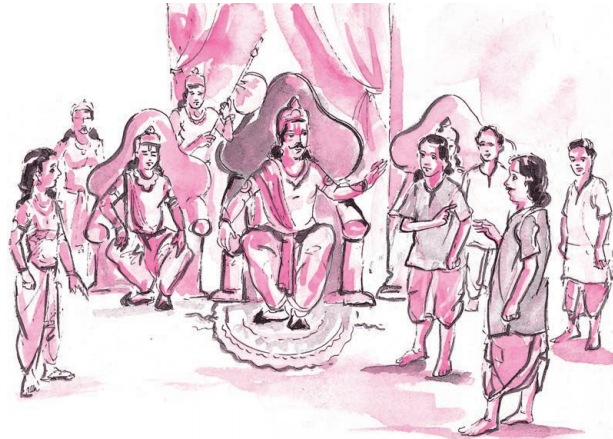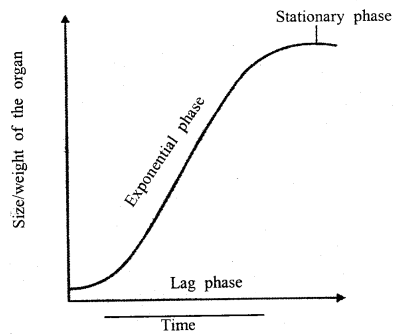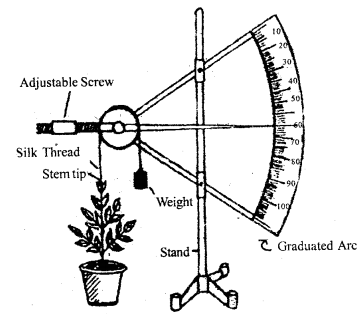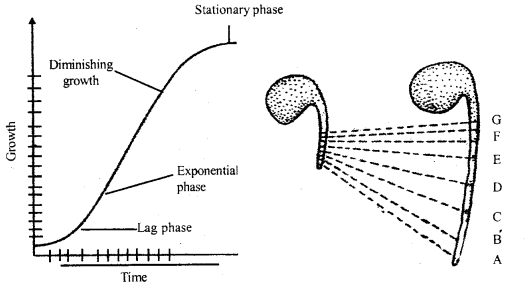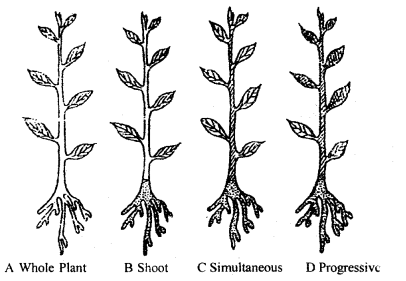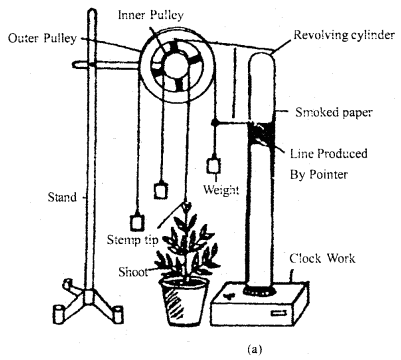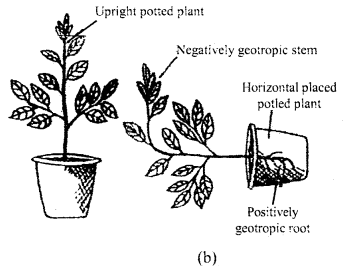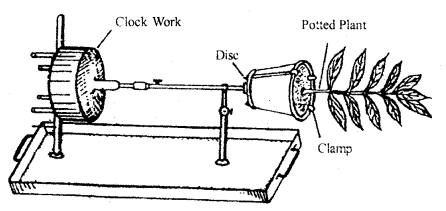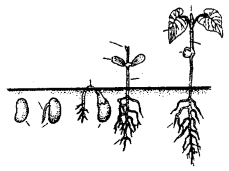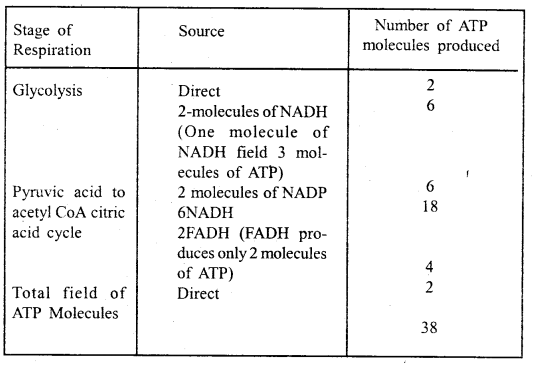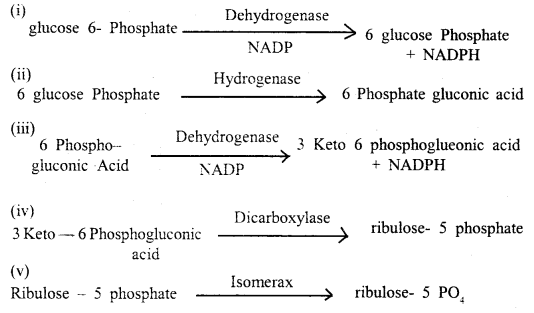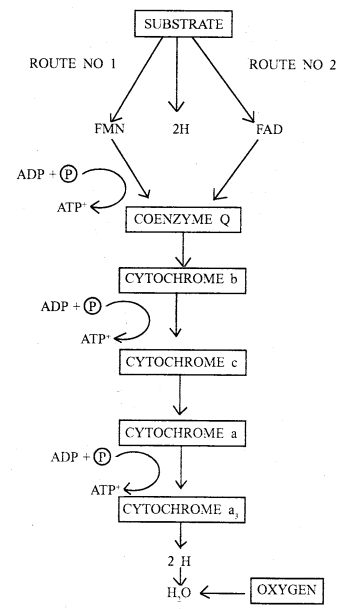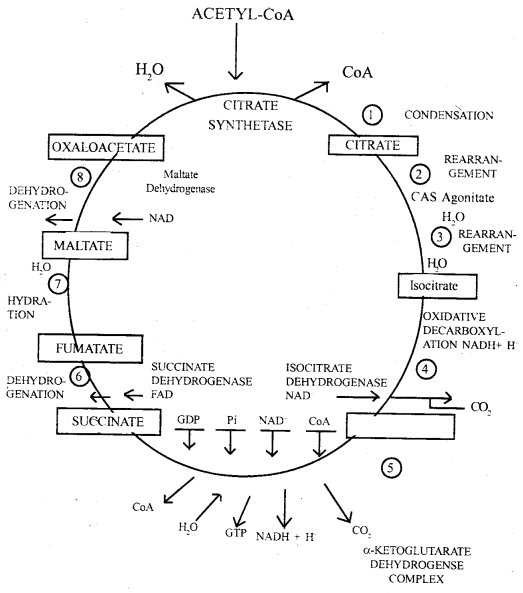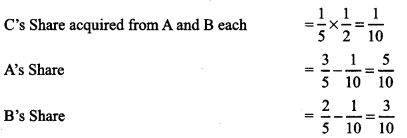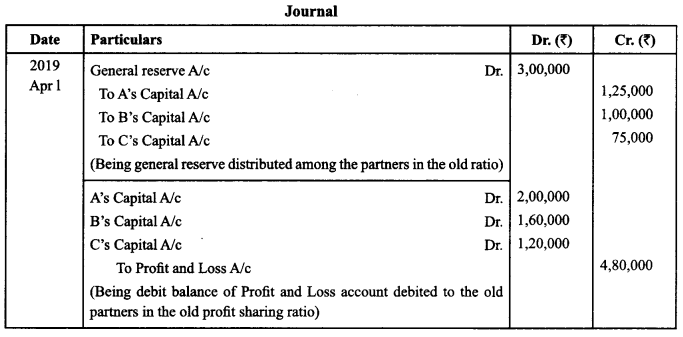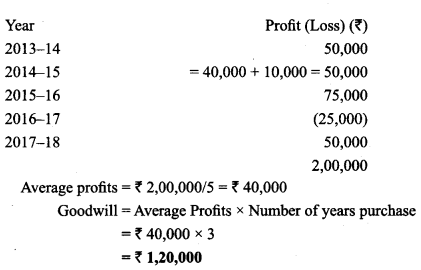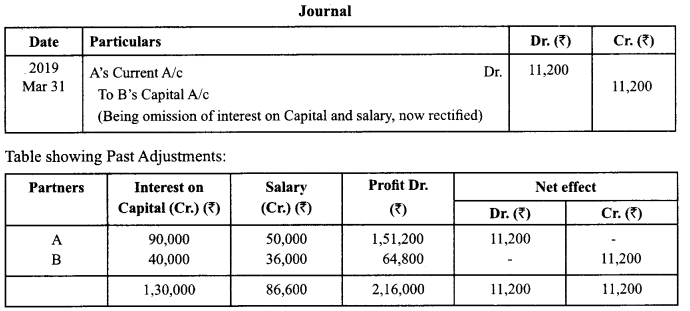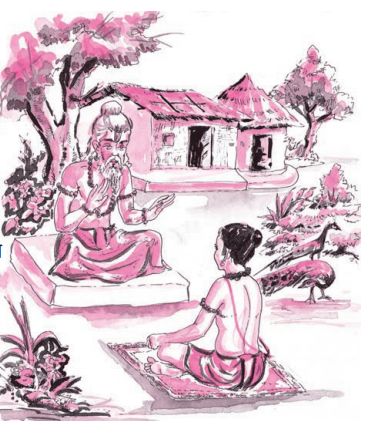By going through these CBSE Class 10 Sanskrit Notes Chapter 7 सौहार्दं प्रकृतेः शोभा Summary, Notes, word meanings, translation in Hindi, students can recall all the concepts quickly.
Class 10 Sanskrit Chapter 7 सौहार्दं प्रकृतेः शोभा Summary Notes
सौहार्द प्रकृतेः शोभा पाठपरिचयः
आजकल हम यत्र-तत्र सर्वत्र देखते हैं कि समाज में प्रायः सभी स्वयं को श्रेष्ठ समझते हुए परस्पर एक-दूसरे का तिरस्कार कर रहे हैं। सामान्यतः पारस्परिक व्यवहार में दूसरों के कल्याण के विषय में तो सोच ही नहीं रह गई। सभी स्वार्थ-साधना में ही लगे हुए हैं और जीवन का उद्देश्य ऐसे लोगों के लिए यही बन गया है कि-
“नीचैरनीचैरतिनीचनीचैः सर्वैः उपायैः फलमेव साध्यम्”
अतः समाज में मेल-जोल बढ़ाने की दृष्टि से इस पाठ में पशु-पक्षियों के माध्यम से समाज में स्वयं को दूसरों से श्रेष्ठ दिखाने के प्रयास को दिखाते हुए प्रकृति माता के माध्यम से अन्त में यह दिखाने का प्रयास किया गया है कि सभी का यथासमय अपना-अपना महत्व है तथा सभी एक-दूसरे पर आश्रित हैं। अतः हमें परस्पर विवाद करते हुए नहीं अपितु मिल-जुलकर रहना चाहिए तभी हमारा कल्याण संभव है।
सौहार्दं प्रकृतेः शोभा Summary
पाठसारः
आधुनिक युग में भौतिक सुखों में जकड़ा हुआ मानव अपने स्वार्थ सिद्धि के लिए अन्यों का अहित और तिरस्कार करने से भी नहीं चूकता। स्वार्थपरक और दूसरों को हीन समझने वाले मनुष्य की सबसे श्रेष्ठ शिक्षिका प्रकृति ही है। समाज के उत्थान, विकास और सुरक्षा के हेतु हमें अपना स्वार्थ छोड़ना ही होगा।

प्रस्तुत पाठ में इसी मानवीय भावना को पशु-पक्षियों के माध्यम से दर्शाया गया है कि परस्पर विवाद नहीं करते हुए आपसी सहयोग से कल्याणपथ पर चलना चाहिए। नदी किनारे आराम करते सिंह को बन्दर अनेक प्रकार से तंग करते हैं तो क्रोधित सिंह उनसे तंग करने का कारण पूछता है। बन्दर सिंह को वनराज पद के अयोग्य घोषित करते है कि वह भक्षक है रक्षक नहीं। और अपनी ही रक्षा करने में असमर्थ है तो अन्यजीवों की रक्षा किस प्रकार करेगा?
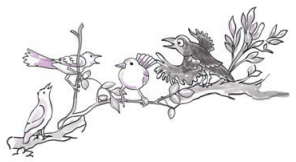
इनका विवाद सुनकर कौआ, कोयल, हाथी, बगुला, मोर, व्याघ्र और चीता भी आते हैं और वनराज पद के लिए अपने गुणों का बखान कर अपनी श्रेष्ठता सिद्ध करने का प्रयास करते हैं और सभी पक्षी अपने पक्षी समुदाय के उल्लू को ही वनराज पद के योग्य कहते हैं। परन्तु कौआ अप्रियवादी, क्रूर रौद्र उल्लू के पक्ष में ना जाकर कहता है मोर, हंस, कोयल, चक्रवाक, तोता और सारस आदि पक्षिप्रधानों के होते हुए, दिन के अंधे और विकराल रूप वाला उल्लू क्या हित करेगा?
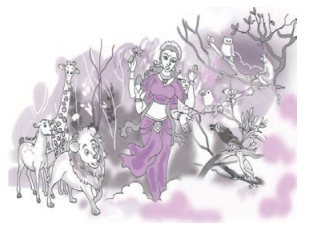
विवाद सुनकर प्रकृतिमाता प्रवेश कर सबसे कहती है कि तुम सब ही मेरी सन्तान हो। परस्पर कलह मत करो मिलकर खुशी से जीवन को रसमय बनाओ। परस्पर विवाद से प्राणियों की हानि होती है और प्रेम व सहयोग से सब प्राणियों का उत्थान व विकास होता है।
सौहार्दं प्रकृतेः शोभा Word Meanings Translation in Hindi
1. वनस्य दृश्यम् समीपे एवैका नदी वहति। एकः सिंहः सुखेन विश्राम्यते तदैव एकः वानरः आगत्य तस्य पुच्छं धुनोति। क्रुद्धः सिंहः तं प्रहर्तुमिच्छति परं वानरस्तु कूर्दित्वा वृक्षमारूढः। तदैव अन्यस्मात् वृक्षात् अपरः वानरः सिंहस्य कर्णमाकृष्य पुनः वृक्षोपरि आरोहति। एवमेव वानरा: वारं वारं सिंह तुदन्ति। क्रुद्धः सिंहः इतस्ततः धावति, गर्जति परं किमपि कर्तुमसमर्थः एव तिष्ठति। वानराः हसन्ति वृक्षोपरि च विविधाः पक्षिणः अपि सिंहस्य एतादृशीं दशां दृष्ट्वा हर्षमिश्रितं कलरवं कुर्वन्ति। निद्राभङ्गदुःखेन वनराजः सन्नपि तुच्छजीवैः आत्मनः एतादृश्या दुरवस्थया श्रान्तः सर्वजन्तून् दृष्ट्वा पृच्छति-
शब्दार्थाः
वहति – बहती है, विश्राम्यते – आराम करता है। पुच्छम् – पूँछ को। धुनोति – पकड़कर घुमा देता है। क्रुद्धः – क्रोधित। प्रहर्तुम् – मारने के लिए। वृक्षम् आरूढः – पेड़ पर चढ़ गया। आकृष्य – खींचकर। तुदन्ति – तंग करते हैं। एतादृशीम् – ऐसी। हर्षमिश्रितम् – प्रसन्नता से मिलीजुली। कलरवम् – चहचहाहट। निद्राभङ्गदुःखेन – नींद के भंग हाने के दुःख से। सन्नपि – होता हुआ। तुच्छजीवैः – छोटे जीवों से। आत्मन: – अपनी। एतादृश्या – ऐसी। दुरवस्थया – बुरी स्थिति से। श्रान्तः – थका हुआ। सर्वजन्तून् – सब जीवों से। पृच्छति – पूछता है।
हिंदी अनुवाद
(वन का दृश्य। पास में ही एक नदी बह रही है।)
एक शेर सुख से विश्राम कर रहा है तभी एक बन्दर आकर उसकी पूँछ को पकड़कर घुमा देता है। क्रोधित शेर उस पर प्रहार करना चाहता है, परन्तु बन्दर कूदकर पेड़ पर चढ़ जाता है। तभी दूसरे पेड़ पर से दूसरा बन्दर शेर के कान को खींचकर फिर पेड़ पर चढ़ जाता है; ऐसे बन्दर बार-बार शेर को तंग करते हैं। क्रोधित सिंह इधर-उधर दौड़ता है, गरजता है, परन्तु कुछ भी करने में असमर्थ (लाचार) ही रहता है। बन्दर हँसते हैं और वृक्ष के ऊपर अनेक प्रकार के पक्षी भी शेर की ऐसी दशा देखकर खुशी से मिलीजुली चहचहाहट करते हैं।
नींद के टूट जाने के दुःख से जंगल का राजा होते हुए भी छोटे जीवों से अपनी ऐसी दशा से थका (शेर) सब जीवों को देखकर पूछता है-
सन्धिः-विच्छेदो वा
पदानि – सन्धिं / सन्धिविच्छेद
एवैका – एव + एका
वृक्षोपरि – वृक्ष + उपरि
प्रहर्तुमिच्छति – प्र + हर्तुम् + इच्छति
एवमेव – एवम् + एवं
वानरः + तु – वानरस्तु
इतस्ततः – इतः + ततः
वृक्षमारूढः – वृक्षम् + आरूढः
किमपि – किम् + अपि तदैव – तदा + एव
सन् + अपि – सन्नपि
कर्णमाकृष्य – कर्णम् + आकृष्य
दुरवस्थया – दुर् + अवस्थया
समासो-विग्रहो वा
पदानि – समासः/विग्रहः – समासनामानि
वृक्षोपरि – वृक्षस्य उपरि – तत्पुरुष समास
हर्षमिश्रितम् – हर्षेण मिश्रितम् – तत्पुरुष समास
वनराजः – वनस्य राजा – तत्पुरुष समास
सर्वजन्तून् – सर्वान् जन्तून् – कर्मधारय समास
कारक एवं उपपद वि०
स: कूदित्वा वृक्षमारूढः।
अत्र आ + रुह् कारणेन (वृक्षम् शब्दे द्वितीया विभक्तिः आगच्छत्)
प्रकृति-प्रत्ययोः विभाजनम्
पदानि – प्रकृतिः + प्रत्ययः
विश्राम्य – वि + श्रम् + ल्यप्
आकृष्य – आ + कृष् + ल्यप्
आगत्य – आ + गम् + ल्यप्
कर्तुम् – कृ + तुमुन्
प्रहर्तुम् – प्र + हृ + तुमुन्
दृष्ट्वा – दृश् + क्त्वा
कुर्दित्वा – कूर्च् + क्त्वा
श्रान्तः – श्रम् + क्त
आरूढः – आ + रुह् + क्त
अव्यय-पद-चयनम् वाक्य-प्रयोगश्च
अव्ययः – अर्थः – वाक्येषु प्रयोगः
एव – ही – ईश्वरः सर्वत्र एव अस्ति।
तदा – तब – तदा एकः वानरः आगच्छति।
अपि – भी – पक्षिणः अपि सिंहं दृष्ट्वा कूजन्ति।
सन् – होते हुए – श्वेतकेतुः द्वादशवर्षीयः सन्नपि सर्वाम् विद्याम् अधीतवान्।
पर्यायपदानि
पदानि – पर्यायाः
समीपे – पावें समर्थः – शक्नोति
विविधाः – अनेका: / अनेके
विश्राम्यते – विश्रामं करोति
अपरः – द्वितीयः
कलरवं कुर्वन्ति – कूजन्ति
धुनोति – गृहीत्वा आन्दोलयति
वारं वारं – भूयः भूयः
दशाम् – स्थितिम्
कर्णमाकृष्य – श्रोत्रं कर्षयित्वा
दृष्ट्वा – अवलोक्य, विलोक्य
हर्ष – प्रसन्नता
तुदतः – पीडत: / अवसादयतः
वृक्षात् – तरोः
सिंह: – वनराजः
कलरवम् – पक्षिणा कूजनम्
हर्तुम् – मारयितुम्
तुच्छः – हीनः
क्रुद्धः – कुपितः
इच्छति – वाञ्छति
जीवैः – प्राणिभिः
विपर्ययपदानि
पदानि – विपर्ययाः
वनस्य – नगरस्य
आत्मनः – परकीय:
हर्षः – शोक:
समीपे – दूरे
दुरवस्थया – सुवस्थया
मिश्रितम् – अमिश्रतम्
सुखेन – दु:खेन
हसन्ति – रुदन्ति
पृष्छति – उत्तरति
आगत्य – गत्वा
पक्षिणः – पशवः
समर्थः – असमर्थः
वारं वारम् – एकवारम्
एतादृशीम् – तादृशीम्
2. सिंहः – (क्रोधेन गर्जन्) भोः! अहं वनराजः किं भयं न जायते? किमर्थं मामेवं तुदन्ति सर्वे मिलित्वा?
एकः वानरः – यतः त्वं वनराजः भवितुं तु सर्वथाऽयोग्यः। राजा तु रक्षकः भवति परं भवान् तु भक्षकः। अपि च स्वरक्षायामपि समर्थः नासि तर्हि कथमस्मान् रक्षिष्यसि?
अन्यः वानरः – किं न श्रुता त्वया पञ्चतन्त्रोक्तिः
यो न रक्षति वित्रस्तान् पीड्यमानान्परैः सदा।
जन्तून् पार्थिवरूपेण स कृतान्तो न संशयः॥
शब्दार्थाः
गर्जन् – गरजते हुए। जायते – उत्पन्न होता है। माम् एवम् – मुझे इस प्रकार से। तुदन्ति – तंग करते हैं। यतः – क्योंकि। भवितुम् – होने में। स्वरक्षायाम् – अपनी रक्षा में। समर्थः – योग्य। तर्हि – तो। वित्रस्तान् – विशेष रूप से डरे हुओं को। पीड्यमानान् – पीड़ित होते हुओं को। परैः – दूसरों के द्वारा। जन्तून् – जीवों को। पार्थिवरूपेण – राजा के रूप में। कृतान्तः यमराज है।
हिंदी अनुवाद
सिंह – (क्रोध से गरजता हुआ) अरे! मैं जंगल का राजा किसी से डरता नहीं। क्यों सभी मिलकर मुझे तंग करते हैं?
एक बन्दर – क्योंकि तुम जंगल के राजा होने के लिए पूरी तरह से अयोग्य हो। राजा तो रक्षक होता है, परन्तु आप तो भक्षक हैं और आप अपनी भी रक्षा करने में भी समर्थ नहीं हैं तो कैसे हमारी रक्षा करोगे?
अन्य (दूसरा) बन्दर – क्या तुमने पञ्चतन्त्र की यह उक्ति (कथन) नहीं सुनी?
जो राजा के रूप में (राजा होते हुए) विशेष रूप से डरे हुओं को तथा दूसरों के द्वारा पीड़ित जन्तुओं की रक्षा नहीं करता है। वह साक्षात् यमराज होता है यहाँ कोई सन्देह नहीं।
सन्धिः-विच्छेदो वा
पदानि – सन्धिं/सन्धिविच्छेद
माम् + एवम् – मामेवम्
नासि – न + असि
सर्वथाऽयोग्यः – सर्वथा + अयोग्यः
कथमस्मान् – कथम् + अस्मान्
स्वरक्षायामपि – स्वरक्षायाम् + अपि
पञ्चतन्त्रोक्तिः – पञ्चतन्त्र + उक्तिः
पीड्यमानानपरैः – पीडूयमानान् + अपरैः
कृत + अन्तः – कृतान्तः
समासो-विग्रहो वा
पदानि – समासः / विग्रहः
पञ्चतन्त्रस्य उक्तिः – पञ्चतन्त्रोक्तिः
वनराजः – वनस्य राजा इति वनराज:
रक्षक: – यः रक्षांकरोति सः रक्षक:
प्रकृति-प्रत्ययोः विभाजनम्
पदानि – प्रकृतिः + प्रत्ययः
गर्जन् – ग + शतृ
भवितुम् – भू + तुमुन्
मिलित्वा – मिल् + क्त्वा
श्रुता – श्रु + क्त + टाप्
पीड्यमान – पीड् + शानच्
कृत – कृ + क्त
अव्यय-पद-चयनम् वाक्य-प्रयोगश्च
अव्ययः – अर्थ – वाक्येषु प्रयोगः
न – नहीं – न तु भक्षकः।
तु – तो – राजा तु रक्षकः भवति।
अपि – भी – अहमपि त्वया सह गमिष्यामि।
च – और – माता च पिता च सर्वदा पूज्यौ स्तः।
पर्यायपदानि
पदानि – पर्यायाः
क्रोधेन – कोपेन
अयोग्यः – न योग्यः
भवितुम् – शक्नोतुम्
रक्षक: – यः रक्षा कर्तुम् शक्नोति सः रक्षकः
तुदन्ति – पीडयन्ति
रक्षिष्यसि – रक्षणं करिष्यसि
वित्रस्तान् – विशेषेण भीतान्
पीड्यमानान – पीडितं कुर्वन्तम्
अपरैः – अन्यैः
सदा – सर्वदा, नित्यम्
जन्तून – प्राणिनः
कृतान्तः – यमराजः
संशयः – संदेहः
विपर्ययपदानि
पदानि – विपर्ययाः
क्रोधेन – हर्षेण, प्रसन्नतया
रक्षकः – भक्षक:
श्रुता – उक्तम्, कथितम्
अहम् – त्वम्
माम् – त्वाम्
न – आम्
भयम् – अभयम्
अयोग्यः – योग्यः
जायते – अजायते
त्रस्तान् – अत्रस्तान्
सदा – कदाचित्
संशयः – असंशयः
रक्षति – भक्षति
3. काकः – आम् सत्यं कथितं त्वया-वस्तुतः वनराजः भवितुं तु अहमेव योग्यः।
पिकः – (उपहसन्) कथं त्वं योग्यः वनराजः भवितुं, यत्र तत्र का-का इति कर्कशध्वनिना वातावरणमाकुलीकरोषि। न रूपं न ध्वनिरस्ति। कृष्णवर्णं, मेध्यामध्यभक्षकं त्वां कथं वनराजं मन्यामहे वयम्?
काकः – अरे! अरे! किं जल्पसि? यदि अहं कृष्णवर्णः तर्हि त्वं किं गौराङ्गः? अपि च विस्मयते किं यत् मम सत्यप्रियता तु जनानां कृते उदाहरणस्वरूपा-‘अनृतं वदसि चेत् काकः दशेत्’-इति प्रकारेण। अस्माकं परिश्रमः ऐक्यं च विश्वप्रथितम्। अपि च काकचेष्ट: विद्यार्थी एव आदर्शच्छात्रः मन्यते।
पिकः – अलम् अलम् अतिविक्थनेन, किं विस्मर्यते यत्-
काकः कृष्णः पिकः कृष्णः कोः भेदः पिककाकयोः।
वसन्तसमये प्राप्ते काकः काकः पिकः पिकः।।
हिंदी अनुवाद
कौआ – हाँ, तुमने सच कहा वास्तव में वनराज (जंगल का राजा) होने के लिए तो मैं ही योग्य हूँ।
कोयल – (उपहास/मजाक करती हुई) कैसे तुम जंगल के राजा (वनराज) हो सकने के योग्य हो, जहाँ-तहाँ काँव-काँव की कठोर आवाज़ से वातावरण को व्याकुल करते हो। (तुम्हारे पास) न सुन्दरता है और ना ही सुन्दर आवाज़ है। काले रंग वाले, खाने योग्य और न खाने योग्य वस्तुओं को खाने वाले तुमको हम कैसे वनराज मानें?
कौआ – अरे! अरे! क्या बड़बड़ाती हो? यदि मैं काले रंग वाला हूँ तो तुम क्या गोरे रंग की हो? और भूल भी जाती हो कि मेरी सत्यप्रियता (सत्य के प्रति प्रेम) तो लोगों के लिए उदाहरण के रूप में –’यदि झूठ बोलोगे तो कौआ काटेगा’-इस प्रकरण में है। हमारा परिश्रम और एकता तो संसार में फैली भी है और कौए की चेष्टा वाला छात्र ही आदर्श छात्र माना जाता है।
कोयल – अधिक आत्मप्रशंसा करने (डींगें मारने) से बस करो। क्या भूल जाते हो कि-
कौआ काला है, कोयल काली है। कौआ और कोयल में क्या भेद है। वसन्त समय आने पर कौआ-कौआ होता है और कोयल-कोयल होती है।
शब्दार्थाः
कथितम् – कहा। वस्तुतः – वास्तव में। उपहसन् – मज़ाक करती हुई। भवितुम् – होने में। कर्कशध्वनिना – कठोर आवाज़ से। आकुलीकरोषि – व्याकुल करते हो। मन्यामहे – मानें। जल्पसि – बड़बड़ाती हो। गौराङ्गः – गोरे रंग की (के)। विस्मयते – भूल जाती हो। सत्यप्रियता – सच से प्रेम। दशेत् – दस ले। ऐक्यम् – एकता (को)। विश्वप्रथितम् – संसार में फैली है। अतिविकत्थनेन – अधिक आत्मा प्रशंसा करते/डोंगें मारने से। काकः-कौआ। कृष्ण: – काला। पिकः – कोयल। भेदः – अन्तर। पिककाकयोः – कोयल और कौए में। प्राप्ते – आने पर (प्राप्त होने पर)। वसन्तसमये – वसन्त ऋतु का समय।
सन्धिः-विच्छेदो वा
पदानि – सन्धिं/सन्धिविच्छेदं
अहमेव – अहम् + एव
मेध्यामेध्यम् – मेध्य + अमेध्यम्
वातावरणमाकुली – वातावरणम् + आकुली
अनृतम् – अन् + ऋतम्
ध्वनिरस्ति – ध्वनिः + अस्ति
आदर्शच्छात्रः – आदर्श + छात्रः
समासो-विग्रहो वा
पदानि – समासः/विग्रहः
वनराजः – वनस्य राजा
पिककाकयोः – पिकः च काकः च तयोः।
प्रकृति-प्रत्ययोः विभाजनम्
पदानि – प्रकृतिः + प्रत्ययः
उपहसन् – उप + हस् + शतृ (पु०)
भवितुम् – भू + तुमुन्
कारकाः उपपदविभक्तयश्च
अलम् अलम् अति विकत्थनेन।
कारणम्-अत्र अलम् कारणेन विकत्थेन शब्दे तृतीय वि० अस्ति।
अव्यय-पद-चयनम् वाक्य-प्रयोगश्च
अव्ययः – अर्थ – वाक्येषु प्रयोगः
यत्र-तत्र – जहाँ-वहाँ – उपवने यत्र-तत्र-सर्वत्र सुन्दरतायाः राजः अस्ति।
यदि-तर्हि – अगर-तो – यदि परिश्रमं करिष्यसि तर्हि उत्तीर्णः भविष्यसि।
अलम् – मत करो, बस करो – छात्रा:! अलम् कोलाहलेन। (निषेधात्मक रूप में)
अलम् – पर्याप्त, काफी – मल्लः मल्लाय अलम्।
अति – अत्यधिक, अधिकता – अति सर्वत्र वर्जयेत्।
पर्यायपदानि
पदानि – पर्यायाः
योग्यः – दक्षः, कुशलः
चेत् – यदि
अतिविकत्थनेन – आत्मप्रशंसया
कथितम् – उक्तम्, वदितम्
वनराजः – वनस्य राजा
विस्मर्यते – न स्मर्यते
भवितुम् – शक्नोति
भक्षकम् – भक्षणं करोति
जनानाम् – मनुष्याणाम्
मेध्यम् – शुद्धम्
परिश्रमः – उद्यमः
कर्कश – कटु
अमेध्यम् – अशुद्धम्
आदर्शः – उच्च:
का-का – काकस्य ध्वनिः
अस्ति – वर्तते
गौराङ्गः – श्वेत वर्णीयः
जल्पसि – व्यर्थम् वदसि
अनृतम् – न ऋतम्
विद्यार्थी – छात्रः
वसन्तसमये – वसन्त ऋतौ
भेदः – अन्तरम्
विपर्ययपदानि
पदानि – विपर्ययाः
योग्यः – अयोग्यः
वयम् – अहम्
अनृतम् – सत्यम्
कर्कश – मधुर
विद्यार्थी – गुरुः, अध्यापक:
परिश्रमः – अलसः
रूपम् – कुरूपम्
गौराङ्गः – कृष्णः
ऐक्यम् – नैक्यम् (न ऐक्यम्)
कृष्णः – श्वेतः
विस्मयते – स्मर्यते
आदर्शः – अनादर्शः
मेध्यम् – अमेध्यम्
सत्य – असत्य
काकः – पिकः
भक्षकम् – रक्षकम्
प्रिय – अप्रिय
कृष्णः – श्वेतः
प्राप्ते – अप्राप्ते
भेदः – अभेदः
4. काकः – रे परभुत! अहं यदि तव संततिं न पालयामि तर्हि कुत्र स्युः पिका:? अतः अहम् एव करुणापरः पक्षिसम्राट काकः।
गजः – समीपतः एवागच्छन् अरे! अरे! सर्वं सभ्भाषणं शृण्वन्नेवाहम् अत्रागच्छम्। अहं विशालकायः, बलशाली, पराक्रमी च। सिंहः वा स्यात् अथवा अन्यः कोऽपि। वन्यपशून् तु तुदन्तं जन्तुमहं स्वशुण्डेन पोथयित्वा मारयिष्यामि। किमन्यः कोऽप्यस्ति एतादृशः पराक्रमी। अतः अहमेव योग्यः वनराजपदाय।
वानरः – अरे! अरे! एवं वा (शीघ्रमेव गजस्यापि पुच्छं विधूय वृक्षोपरि आरोहति।
शब्दार्थाः
परभृत्! – दूसरों पर पलने वाली। शृण्वन्नेव – सुनते हुए ही। सन्ततिम् – सन्तान को। विशालकाय: – बड़े शरीर वाला। तर्हि – तो। तुदन्तम् – तंग करते हुए को। स्युः – होवें। जन्तुम् – जीव को। करुणापरः – दयालु। पोथयित्वा – लपेटकर। पक्षिसम्राट् – पक्षियों का राजा। एतादृशः – ऐसा। समीपत: – पास से। विधूय – मरोड़कर। आरोहति – चढ़ जाता है।
हिंदी अनुवाद
कौआ – अरे दसरों पर पलने वाली। यदि मैं तेरी सन्तान को नहीं पालूँ तो कहाँ कोयल हो? इसलिए मैं ही दयालु पक्षियों का राजा कौआ हूँ।
हाथी – पास से ही आते हुए अरे! अरे! सारी बात को सुनता हुआ ही मैं यहाँ आया हूँ। मैं बहुत बड़े शरीर वाला, बलवान और वीर हूँ। शेर हो अथवा दूसरा कोई भी। वन के पशुओं को तंग (परेशान) करते हुए जीव को मैं अपनी सूंड से पटक-पटककर मार डालूँगा। क्या कोई दूसरा ऐसा वीर है। इसलिए मैं ही वनराज (जंगल के
राजा) के पद के लिए योग्य हूँ।
बन्दर – अरे! अरे! अथवा ऐसे (जल्दी से ही हाथी के भी पूँछ को मरोड़कर पेड़ के ऊपर चढ़ जाता है।)
सन्धिः-विच्छेदो वा
पदानि – सन्धिं/सन्धिविच्छेद
करुणापरः – करुणा + अपर:
किमन्यः – किम् + अन्य:
एवागच्छन् – एव + आगच्छन्
कोऽप्यस्ति – क: + अपि + अस्ति
शृण्वन्नेवाहम् – शृण्वन् + एव + अहम्
अहमेव – अहम् + एव
अत्रागच्छम् – अत्र + आगच्छम्
शीघ्रमेव – शीघ्रम् + एव
कोऽपि – क: + अपि
गजस्यापि – गजस्य + अपि
जन्तुमहं – जन्तुम् + अहम्
वृक्षोपरि – वृक्ष + उपरि
समासो-विग्रहो वा
पदानि – समासः/विग्रहः
पक्षिसम्राट् – पक्षिणाम् सम्राट
परभृत – परैः भृत्
वन्यपशून् – वन्यस्य पशून्
विशालकायः – विशाल: काय; मस्य सः
प्रकृति-प्रत्ययोः विभाजनम्
पदानि – प्रकृतिः + प्रत्ययः
बलशाली – बलशाल् + णिनि (इन्)
पराक्रमी – पराक्रम + णिनि (इन्)
विधूय – वि + धू + ल्यप्
अव्यय-पद-चयनम् वाक्य-प्रयोगश्च
अव्ययाः – अर्थाः – वाक्येषु प्रयोगः
यदि-तर्हि – यदि-तो – काकः यदि पिकस्य सन्ततिं न पालयति तर्हि कुत्र स्युः पिकाः?
च – और – गजः पराक्रमी बलशाली च भवति।
अतः – इसलिए – अतः काकः करुणापरः भवति।
एवम् – ऐसा – अरे! एवम् मृषा मा वदितव्यम्।
पर्यायपदानि
पदानि – पर्यायाः
संतति – आत्मजः
पोथयित्वा – पीडयित्वा
वन्यः – जंगल / कानन
पालयामि – पालनं करोमि
मारयिष्यामि – हनिष्यामि
तुदन्तम् – पीऽयमानम्
सम्राट् – राजा
विधूय – आकर्ण्य
योग्यः – दक्षः, कुशल:
कायः – शरीरः
उपरि – उच्चैः
वनराज – वनस्य स्वामी
सर्वाम् – सम्पूर्णाम्
स्यः – भवेत्
शीघ्रम् – आशु
शृण्वन् – आकर्णयन्
करुणापर: – दयालुः
गजः – हस्ती, करी
पराक्रमी – हिम्मती
पक्षी – खगः
वृक्षोपरि – वृक्षस्य उपरि
अस्ति – वर्तते, विद्यते
अन्यः – अपर:
विपर्ययपदानि
पदानि – विपर्ययाः
परभृत् – स्वभृत्
मारयिष्यामि – जीविष्यामि
तुदन्तम् – प्रसीदन्तम्
संतति – असंतति
शीघ्रम् – मन्दम्
आरोहति – अवरोहति
आगच्छन् – अगच्छन्
सर्वाम् – एकाम्
वृक्षस्योपरि – वृक्षस्याधः
विशालकायः – लघुकाय:
अत्र – तत्र
उपरि – अधः
स्यात् – भवेत्
बलशाली – निर्बलः
5. (गजः तं वृक्षमेव स्वशुण्डेन आलोडयितुमिच्छति परं वानरस्तु कूर्दित्वा अन्यं वृक्षमारोहति। एवं गजं वृक्षात् वृक्षं प्रति धावन्तं दृष्ट्वा सिंहः अपि हसति वदति च।)
सिंहः – भोः गज! मामप्येवमेवातुदन् एते वानराः।
वानरः – एतस्मादेव तु कथयामि यदहमेव योग्यः वनराजपदाय येन विशालकायं पराक्रमिणं, भयंकरं चापि सिंह गजं वा पराजेतुं समर्था अस्माकं जातिः। अतः वन्यजन्तूनां रक्षायै वयमेव क्षमाः। (एतत्सर्वं श्रुत्वा नदीमध्यस्थितः एकः बकः)
बकः – अरे! अरे! मां विहाय कथमन्यः कोऽपि राजा भवितुमर्हति अहं तु शीतले जले बहुकालपर्यन्तम् अविचल: ध्यानमग्नः स्थितप्रज्ञ इव स्थित्वा सर्वेषां रक्षायाः उपायान् चिन्तयिष्यामि, योजना निर्मीय च स्वसभायां विविधपदमलंकुर्वाणैः जन्तुभिश्च मिलित्वा रक्षोपायान् क्रियान्वितान् कारयिष्यामि, अतः अहमेव वनराजपदप्राप्तये योग्यः।
मयूरः – (वृक्षोपरितः-साट्टहासपूर्वकम्) विरम विरम आत्मश्लाघायाः किं न जानासि यत्-
यदि न स्यान्तरपतिः सम्यङ्नेता ततः प्रजा।
अकर्णधारा जलधौ विप्लवेतेह नौरिव॥
शब्दार्थाः
स्वशुण्डेन – अपनी सूंड से। आलोडयितुम् – हिलाने में हिलाया। कूर्दित्वा – कूदकर। आरोहति – चढ़ जाता है। धावन्तम् – दौड़ते हुए को। माम् – मुझे/मुझको। अतुदन् – तंग किया है। वनराजपदाय – जंगल के राजा के पद हेतु। पराक्रमिणम् – वीर। पराजेतुम् – हराने के लिए। समर्था – समर्थ है। रक्षायैः – रक्षा के लिए। क्षमाः – समर्थ हैं। नदीमध्यः – नदी के बीच से। विहाय – छोड़कर। कथम् – कैसे। अन्यः – दूसरा। भवितुमर्हति – हो सकता है। अविचलः – शान्त। स्थितप्रज्ञः – योगी। नीर्मीय – निर्माण करके। अलंकुर्वाणैः – सुशोभित करने वालों से। जन्तुभिः – जीवों के द्वारा। क्रियान्वितान् – क्रियान्वित। कारयिष्यामि – कराऊँगा। आत्मश्लाघायाः – अपनी प्रशंसा से। यदि – यदि। सम्यङ्नेता – अच्छा नेता। ततः – उससे। अकर्णधारा – कान तक के जल वाले। स्यात् – हो। जलधौ – सागर में। नरपतिः – राजा। विप्लेवेत् – डूब जाए। इह – इस संसार में। नौः – नौका।
हिंदी अनुवाद
(हाथी उस पेड़ को ही अपनी सूंड से हिलाना चाहता है परन्तु बन्दर कूदकर दूसरे वृक्ष पर चढ़ जाता है। इस प्रकार हाथी को एक वृक्ष से दूसरे वृक्ष की ओर दौड़ते हुए देखकर शेर भी हँसता है और कहता है।)
सिंह – हे हाथी! मुझको भी इन बन्दरों ने ऐसे ही तंग किया था।
बन्दर – इसीलिए तो कहता हूँ कि मैं ही वनराज (जंगल के राजा) के पद हेतु योग्य हूँ, जिससे हमारी जाति बड़े शरीर वाले, वीर और भयानक शेर अथवा हाथी को भी पराजित (हराने) करने में समर्थ है। अत: जंगल के जीवों की रक्षा के लिए हम ही योग्य (समर्थ) हैं।
(यह सब सुनकर नदी के बीच से बगुला)
बगुला – अरे! अरे! मुझको छोड़कर कैसे दूसरा कोई भी राजा हो सकता है। मैं तो ठंडे जल में बहुत समय तक स्थिर, ध्यान में मग्न योगी की तरह ठहरकर (स्थिति होकर) सबकी रक्षा के उपायों को सोचूँगा और योजना बनाकर अपनी सभा में अनेक पदों को सुशोभित करने वाले जीवों से मिलकर रक्षा के उपायों को कार्यान्वित (साकार रूप में) कराऊँगा। इसलिए मैं ही जंगल के राजा के पद की प्राप्ति के लिए योग्य हूँ।
मोर – (वृक्ष के ऊपर से-अट्टहासपूर्वक) अपनी प्रशंसा करने से रुको रुको; नहीं जानते हो कि-
जो नेता अच्छा राजा नहीं होवे तो उससे (उसकी) प्रजा कान तक के जल वाले समुद्र में डूबने वाली नौका की तरह इस संसार में डूब जाती है।
सन्धिः-विच्छेदो वा
पदानि – सन्धिं/सन्धिविच्छेदं
वृक्षमेव – वृक्षम् + एव
एतत्सर्वम् – एतत् + सर्वम्
आलोडयितुमिच्छति – आलोडयितुम् + इच्छति
कथमन्यः – कथम् + अन्यः
वानरस्तु – वानरः + तु
भवितुमर्हति – भवितुम् + अर्हति
वृक्षमारोहति – वृक्षम् + आरोहति
विविधपदमलकुर्वाणैः – विविध + पदम् + अलंकुर्वाणैः
मामप्येवमेवातुदन् – माम् + अपि + एवम् + अतुदन्
जन्तुभिश्च – जन्तुभिः + च
एतस्मात् + एव – एतस्मादेव
रक्षोपायान् – रक्ष + उपयान्
चापि – च + अपि
यदहमेव – यत् + अहम् + एव
वयमेव – वयम् + एव
कोऽपि – कः – अपि
अहमेव – अहम् + एव
वृक्ष + उपरितः – वृक्षोपरितः
नौः + इव – नौरिव
स्यान्नरपतिः – स्यात् + नरपतिः
सम्यङ्नेता – सम्यक् + नेता
विप्लवेतेह – विप्लेवेत् + इह
समासो-विग्रहो वा
पदानि – समासः/विग्रहः
धयानमग्नः – ध्यान मग्नः
भयंकरः – भयं करोति इति भयंकरः
स्थितिप्रज्ञः – स्थिता प्रज्ञा यस्य सः
अकर्णधारा – न कर्णधारा
अट्टहासेन सहितम् – साट्टहासम्
जलम् धीयते इति, तस्मिन् – जलधौ
कारकाः उपपदविभक्तयश्च
वानरस्तु कूर्दित्वा अन्यं वृक्षमारोहति।
-अत्र आ + रुह् कारणेन वृक्षम् शब्दे द्वितीया विभक्तिः प्रयुक्ता।
गजं वृक्षात् वृक्षं प्रति धावन्तं दृष्ट्वा सिंहः हसति।
-अत्र प्रति कारणेन वृक्षम् शब्दे द्वितीया विभक्ति प्रयुक्ता।
प्रकृति-प्रत्ययोः विभाजनम्
पदानि – प्रकृतिः + प्रत्ययः
आलोडयितुम् – आलोडय + तुमुन्
विहाय – वि + हा + ल्यप्
धावन्तम् – धाव् + शतृ
भवितुम् – भू + तुमुन्
दृष्ट्वा – दृश् + क्त्वा
स्थित – स्था + क्त
पराजेतु – पराजय + तुमुन्
स्थित्वा – स्था + क्त्वा
कूर्दित्वा – कूत् + क्त्वा
निर्मीय – निर् + मीञ् + ल्यप्
श्रुत्वा – श्रु + क्त्वा
मिलित्वा – मिल् + क्त्वा
अव्यय-पद-चयनम् वाक्य प्रयोगश्च
अव्ययः – अर्थ – वाक्येषु प्रयोगः
प्रति – की तरफ – गजः वृक्षात् वृक्षम् प्रति धावति।
अपि – भी – एतत् दृष्ट्वा सिंहः अपि हसति।
ततः – इसके बाद – ततः सिंहः उच्चैः अगर्जत्।
इव – समान – संसारे माता इव कोऽपि न अस्ति।
न – नहीं – यत्र निषेधः तत्र न गन्तव्यम्।
पर्यायपदानि
पदानि – पर्यायाः
गजः – हस्ती, करी
अतः – एतदर्थम्
दृष्ट्वा – अवलोक्य
शृत्वा – आकर्ण्य
तुदन् – पीड्यन्
विहाय – त्यक्त्वा
वदति – कथयति
राजा – नृपः, भूपतिः, नरपतिः
वानराः – कपयः, मर्कटा:
जलम् – वारि, नीर
विशालकायम् – विशालम् शरीरम्
कालम् – समयम्
भयंकरम् – भयं
बहुं – अत्यधिकम्
पराक्रमिणाम् – साहसिनमः
अविचलः – न विचलः
रक्षायै – रक्षार्थम्
रक्षोपायान् – रक्षायाः उपायान्
स्थितिप्रज्ञ – यस्य: बुद्धि स्थिरः भवति
साट्टहासपूर्वकम् – अट्टहासेन पूर्वकम्
चिन्तयिष्यामि – विचारयिष्यामि
जन्तुभिः – प्राणैः
विरम – तिष्ठ
आत्मश्लाघायाः – आत्मप्रशंसाया:
स्यात् – भवेत्
सम्यक् – उचित प्रकारेण
ततः – तत्पश्चात्
नरपतिः – भूपतिः, नृपः, राजा
नौः – तरणिः, नौका
विप्लवेत् – निमज्जेत्
जलधौ – सागरे
नौरिव – नौः + इव-नौकायाः समानम्
कर्ण – श्रोत्रम्
नेता – नायक:
विपर्ययपदानि
पदानि – विपर्ययाः
गजः – गजिनी
विहाय – गृहीत्वा
मिलित्वा – कलहित्वा
हसति – रोदिति
राजा – प्रजा
कारयिष्यामि – अकारयिष्यामि
तुदन् – अतुदन्
शीतले – उष्णे
वयम् – अहम्
पराक्रमिणम् – अपराक्रमिणम्
जले – स्थले
आत्मश्लाघायाः – परश्लाघायाः
पराजेतुम् – अपराजेतुम्
अविचलः – विचल:
जानासि – अजानासि
क्षमाः – श्रापः
स्थित्वा – चलित्वा
सम्यक् – असम्यक्
राजा – प्रजा
अकर्णधारा – कर्णधारा
जलधौ – भूमौ
6. को न जानाति तव ध्यानावस्थाम्। “स्थितप्रज्ञ’ इति व्याजेन वराकान् मीनान् छलेन अधिगृह्य क्रूरतया भक्षयसि।
धिक् त्वाम्। तव कारणात् तु सर्वं पक्षिकुलमेवावमानितं जातम्।
वानरः – (सगर्वम्) अतएव कथयामि यत् अहमेव योग्यः वनराजपदाय। शीघ्रमेव मम राज्याभिषेकाय तत्पराः भवन्तु सर्वे वन्यजीवाः।
मयूरः – अरे वानर! तूष्णीं भव। कथं त्वं योग्य: वनराजपदाय? पश्यतु पश्यतु मम शिरसि राजमुकुटमिव शिखां स्थापयता विधात्रा एवाहं पक्षिराजः कृतः अतः वने निवसन्तं माम् वनराजरूपेणापि द्रष्टुं सज्जाः भवन्तु अधुना यतः कथं कोऽप्यन्यः विधातुः निर्णयम् अन्यथाकर्तुं क्षमः।
काकः – (सव्यङ्ग्यम्) अरे अहिभुक्। नृत्यातिरिक्तं का तव विशेषता यत् त्वां वनराजपदाय योग्यं मन्यामहे वयम्।
मयूरः – यतः मम नृत्यं तु प्रकृतेः आराधना। पश्य! पश्य! मम पिच्छानामपूर्वं सौंदर्यम् (पिच्छानुद्घाट्य नृत्यमुद्रायां स्थितः सन्) न कोऽपि त्रैलोक्ये मत्सदृशः सुन्दरः। वन्यजन्तूनामुपरि आक्रमणं कर्तारं तु अहं स्वसौन्दर्येण नृत्येन च आकर्षितं कृत्वा वनात् बहिष्करिष्यामि। अतः अहमेव योग्यः वनराजपदाय।
शब्दार्थाः
जानाति – जानता है। स्थितप्रज्ञः – योगी। व्याजेन – बहाने से। वराकान् – बेचारी। अधिगृह्य – पकड़कर। क्रूरतया – निर्दयता से। अवमानितम् – अपमानित (कर दिया है)। जातम् – हो गया है। सगर्वम् – अभिमान के साथ। तत्परा: – तैयार। वन्यजीवा: – जंगल के जीव। शिरसि – सिर पर। शिखाम् – चोटी को। स्थापयता – स्थापित करने वाले। विधात्रा – परमात्मा के द्वारा। पक्षिराजः – पक्षियों का राजा। कृतः – बनाया गया। निवसन्तम् – निवास करने वाले को। सज्जा: – तैयार। यतः – क्योंकि। विधातुः – परमात्मा के। क्षमः – समर्थ है। अहिभुक् – साँप खाने वाले। पिच्छानाम् – पंखों की। अपूर्वम् – अनोखी। सौन्दर्यम् – सुन्दरता। पिच्छान् – पंखों को। उद्घाट्य – फैलाकर। सन् – होता हुआ। कर्तारम् – करने वाले को। स्वसौन्दर्येण – अपनी सुन्दरता से। बहिष्करिष्यामि – बाहर कर दूंगा। मत्सदृशः – मेरे जैसा। अन्यथाकर्तुम् – मिटाने में।
हिंदी अनुवाद
मोर – तुम्हारी ध्यान की अवस्था (स्थिति) वो कौन नहीं जानता है। योगी के बहाने से बेचारी मछलियों को छलपूर्वक पकड़कर निर्दयता से खा जाते हो। तुम्हें धिक्कार है। तुम्हारे कारण से तो सारा पक्षिकुल (पक्षियों का संसार) ही अपमानित हो गया है।
बन्दर – (गर्व के साथ) इसलिए कहता हूँ कि मैं ही वनराज (वन के राजा के) पद के लिए योग्य हूँ। सभी वन के जीव शीघ्र ही मेरे राज्याभिषेक के लिए तैयार हों। मोर – अरे बन्दर! चुप हो जा। तू जंगल के राजा के पद के लिए कैसे योग्य है? देखो-देखो मेरे सिर पर राजमुकुट की तरह चोटी को स्थापित करने वाले परमात्मा ने ही मुझे पक्षीराज बनाया है इसलिए वन में निवास करने वाले (निवास करते हुए) मुझको जंगल के राजा के रूप में भी देखने के लिए (आप सब) तैयार हों। इस समय क्योंकि कैसे कोई भी दूसरा परमात्मा की व्यवस्था (निर्णय) को व्यर्थ करने में समर्थ है।
कौआ – (व्यंग्य के साथ) अरे साँप खाने वाले! नाचने के अलावा तुम्हारी क्या विशेषता है कि तुमको वनराज के पद के लिए हम योग्य मान लें।
मोर – क्योंकि मेरा नृत्य (नाच) तो प्रकृति की पूजा है। देखो! देखो! मेरे पंखों (पूँछ) की अनोखी सुन्दरता (पंखों को खोलकर नाच/नृत्य की मुद्रा स्थिति में खड़ा होता हुआ) कोई भी तीनों लोकों में मेरी तरह सुन्दर नहीं है। जंगल के जीवों पर आक्रमण करने वाले को मैं अपनी सुन्दरता और नृत्य से आकर्षित करके जंगल से बाहर कर दूंगा। इसलिए मैं ही वन के राजा के पद के लिए योग्य हूँ।
सन्धिः-विच्छेदो वा
पदानि – सन्धि/सन्धिविच्छेद
ध्यानावस्थाम् – ध्यान + अवस्थाम्
पक्षिकुलमेवावमानितम् – पक्षिकुलम् + एव + अवमानितम्
अहम् + एव – अहमेव
शीघ्रमेव – शीघ्रम् + एव
राज्याभिषेकाय – राज्य + अभिषेकाय
राजमुकुटमिव – राजमुकुटम् + इव
एवाहं – एव + अहम्
वनराजरूपेणापि – वनराजरूपेण + अपि
कोऽप्यन्यः – क: + अपि + अन्यः
पिच्छानामपूर्व – पिच्छानाम् + अपूर्वम्
पिच्छानुद्घाट्य – पिच्छान् + उद्घाट्य
क: + अपि – कोऽपि
मत् + सदृशः – मत्सदृश:
वन्यजन्तूनामुपरि – वन्यजन्तूनाम् + उपरि
बहिष्करिष्यामि – बहिः + करिष्यामि
अहमेव – अहम् + एव
समासो-विग्रहो वा
पदानि – समासः/विग्रहः
पक्षिराजः – पक्षिणाम् राजा
स्थितप्रज्ञः – स्थिता प्रज्ञा यस्य सः
पक्षिणाम् कुलः – पक्षिकुलः
वन्यजीवाः – वनस्य जीवा:
अहिभुक् – अहिं भुङ्क्ते यः सः
वनराजपदाय – वनराजस्य पदाय
त्रैलोक्ये – त्रयाणाम् लोकानाम् समाहारः
गर्वेण सहितम् – सगर्वम्
ध्यानावस्थाम् – ध्यानस्य अवस्थाम्
कारका: उपपद्विभक्तयश्च
धिक् त्वाम् – अत्र धिक् कारणेन त्वाम् शब्दे द्वितीया विभक्ति प्रयुक्ता।
अहं वनात् बहिः करिष्यामि। – अत्र बहिः कारणेन वनात् शब्दे पंचमी विभक्ति अस्ति।
आखेटक: वन्यजन्तुनाम् – अत्र अपरि कारणेन जन्तूनाम् पर्द षष्ठी विभक्ति प्रयुक्ता।
उपरि आक्रमणं करोति।
अव्यय-पद-चयनम् वाक्य-प्रयोगश्च
अव्ययाः – अर्थाः – वाक्येषु प्रयोगः
न – नही – को न जानाति बकस्य ध्यानावस्थाम्।
यत:-तु – क्योंकि-तो – यतः मयूरस्य नृत्यं तु प्रकृतेः आराधना।
तृष्णीम् – चुपचाप – कक्षायाम् तूष्णीम् स्थातव्यम्।
इव – समान – मयूरस्य शिरसि राजमुकुटमिव शिखां शोभते।
अतः – इसलिए – अतः मूयरः राष्ट्र-पक्षी अस्ति।
प्रकृति-प्रत्ययोः विभाजनम्
पदानि – प्रकृतिः + प्रत्ययः
अधिगृह्य – अधि + गृह् + ल्यप्
स्थापयता – स्थापय + शतृ
क्रूरतया – क्रूर + तल्
कृतः – कृ + क्त
जातम् – जन् + क्त
निवसन्तम् – नि + वस् + शतृ
द्रष्टुम् – दृश् + तुमुन्
कर्तुम् – कृ + तुमुन्
कृत्वा – कृ + क्त्वा
पर्यायपदानि
पदानि – पर्यायाः
ध्यानावस्थाम् – ध्यानस्य स्थितिम्
पश्यतु – दर्शय
मीनान् – मत्स्यान्
शिरसि – मस्तके
अधिगृह्य – गृहीत्वा
विधातुः – परमात्मनः
भक्षयसि – खादयसि
अधुना – इदानीम्, सम्प्रति
धिक् – धिक्कार अस्ति
अहिभुक् – मयूरः
अवमानितम् – अपमानितम्
आराधना – प्रार्थना
जातम् – अभवत्
सौंदर्यम् – शोभनम्, सुंदरता
सगर्वम् – अहङकारेण सहितम्
सदृशः – इव, समान
योग्यः – दक्षः, कुशल:
अपूर्वम् – अद्भुतम्
शीघ्रम् – क्षिप्रम्
वनात् – काननात्
वानर – मर्कट
तत्पराः – उद्यता:
भव – असि
कृतः – रचितः
उद्घाटय – प्रसार्य
क्षमः – सक्षमः
विपर्ययपदानि
पदानि – विपर्ययाः
जानाति – न जानाति
कर्तुम् – अकर्तुम्
वराकान् – क्रूरान्
शिरसि – चरणौ
छलेन – सरलतया
पक्षिकुलम् – पक्षिएकम्
निर्णयम् – अनिर्णयम्
7. (एतस्मिन्नेव काले व्याघ्रचित्रको अपि नदीजलं पातुमागतौ एतं विवादं शृणुतः वदतः च)
व्याघ्रचित्रको – अरे किं वनराजपदाय सुपात्रं चीयते?
एतदर्थं तु आवामेव योग्यौ। यस्य कस्यापि चयनं कुर्वन्तु सर्वसम्मत्या।
सिंहः – तूष्णीं भव भोः। युवामपि मत्सदृशौ भक्षको न तु रक्षकौ। एते वन्यजीवाः भक्षकं रक्षकपदयोग्य न मन्यन्ते अतएव विचारविमर्शः प्रचलित।
बकः – सर्वथा सम्यगुक्तम् सिंहमहोदयेन। वस्तुतः एव सिंहेन बहुकालपर्यन्तं शासनं कृतम् परमधुना तु कोऽपि पक्षी एव राजेति निश्चेतव्यम् अत्र तु संशोतिलेशस्यापि अवकाशः एव नास्ति।
शब्दार्थाः
एतस्मिन्नेव – इसी में। काले – समय में। पातुम् – पीने के लिए। आगतौ – आ गए। सुपात्रम् – योग्य पात्र। चीयते – चुना जा रहा है। कुर्वन्तु – कर लें। सर्वसम्ममत्या – सबकी सम्मति से। तूष्णीम् भव – चुप हो जाओ। विचारविमर्शः – सोच-विचार। बहुकालपर्यन्तम् – बहुत समय तक। निश्चेतव्यम् – निश्चित करना चाहिए। राजा इति – राजा हो इस प्रकार। अवकाशः – स्थान। संशीतिलेशस्य – थोड़े से भी संदेह का।
हिंदी अनुवाद
(इसी समय बाघ और चीता भी नदी के जल को पीने के लिए आ गए, इस विवाद को सुनते और बोलते हैं)
बाघ और चीता – अरे क्या वन के राजा के पद के लिए अच्छे पात्र (प्रत्याशी) को चुना जा रहा है? इसके लिए तो हम दोनों ही योग्य हैं। जिस किसी का भी सबकी सहमति से कर लें।
सिंह – अरे चुप हो जाओ। तुम दोनों भी मुझ जैसे ही भक्षक हो रक्षक तो नहीं। यहाँ वन के जीव भक्षक को रक्षक के पद के योग्य नहीं मानते हैं इसलिए बात चल रही है।
बगुला – शेर महोदय ने पूरी तरह से ठीक ही कहा है। वास्तव में शेर ने ही बहुत समय तक राज्य किया है परन्तु अब तो कोई पक्षी ही राजा बने ऐसा निश्चय करना चाहिए यहाँ तो संशय (सन्देह) का थोड़ा सा भी स्थान नहीं है।
सन्धिः-विच्छेदो वा
पदानि – सन्धिं/सन्धिविच्छेद
एतस्मिन्नेव – एतस्मिन् + एव
पातुमागतो – पातुम् + आगतौ
एतदर्थं – एतत् + अर्थम्
आवामेव – आवाम् + एव
कस्यापि – कस्य + अपि
युवामपि – युवाम् + अपि
सम्यगुक्तम् – सम्यक् + उक्तम्
परमधुना – परम् + अधुना
कः + अपि – कोऽपि
राजा + इति – राजेति
संशीतिलेशस्यापि – संशीतिलेशस्य + अपि
नास्ति – न + अस्ति
प्रकृति-प्रत्ययोः विभाजनम्
पदानि – प्रकृतिः + प्रत्ययः
पातुम् – पा + तुमुन्
पक्षी – पक्ष् + णिनि (इन्)
समासो-विग्रहो वा
पदानि – समासः/विग्रहः
व्याघ्रचित्रकौ – व्याघ्रः च चित्रक: च
नद्याः जलम् – नदीजलम्
वनराजपदाय – वनराजस्य पदाय
अव्यय-पद-चयनम् वाक्य-प्रयोगश्च
अव्ययः – अर्थ – वाक्येषु प्रयोगः
अधुना – अभी – अधुना तो कोऽपि पक्षी एव राजेति निश्चेतव्यम्।
अत्र – यहाँ – अत्र तु अवकाशः एव नास्ति।
सर्वथा – हर प्रकार से – सिंह महोदयेन सर्वथा सम्यक् उक्तम्।
तूष्णीम् – चुप – छात्रा:! तूष्णीम् भव।
पर्यायपदानि
पदानि – पर्यायाः
काले – समये
पातुम् – पीत्यार्थम्
वनराजपदाय – वनराजस्यपदाय
एतदर्थम् – अतएव
संशीति – संशयः, संदेहः
सुपात्रम् – योग्य पात्रम्
नदीजलम् – नद्याः जलम्
विवादम् – कलहम्
अवकाशः – स्थानम्
भक्षकः – यः भक्षणं करोति
रक्षकः – यः रक्षा करोति
सम्यक् – उचित प्रकारेण
विपर्ययपदानि
पदानि – विपर्ययाः
पातुम् – खादितुम्
तूष्णीम् – चीत्कारम्
रक्षक: – भक्षक:
सम्यक् – असम्यक्
पक्षी – पशु
राजा – प्रजा
निश्चेतव्यम् – अनिश्चेतव्यम्
अत्र – तत्र
अवकाशः – अनवकाशः
नास्ति – अस्ति
8. सर्वे पक्षिण: – (उच्चैः) आम् आम्-कश्चित् खगः एव वनराजः भविष्यति इति।
(परं कश्चिदपि खगः आत्मानं विना नान्यं कमपि अस्मै पदाय योग्यं चिन्तयन्ति तर्हि कथं निर्णयः भवेत् तदा तैः सर्वैः गहननिद्रायां निश्चिन्तं स्वपन्तम् उलूकं वीक्ष्य विचारितम् यदेषः आत्मश्लाघाहीनः पदनिर्लिप्तः उलूको एवास्माकं राजा भविष्यति। परस्परमादिशशन्ति च तदानीयन्तां नृपाभिषेकसम्बन्धिनः सम्भाराः इति।)
सर्वे पक्षिणः सज्जायै गन्तुमिच्छन्ति तर्हि अनायास एव-
काकः – (अट्टाहसपूर्णेन-स्वेरण)-सर्वथा अयुक्तमेतत् यन्मयूर-हंस-कोकिल-चक्रवाक-शुक सारसादिषु पक्षिप्रधानेषु विद्यमानेषु दिवान्धस्यास्य करालवक्त्रस्याभिषेकार्थं सर्वे सज्जाः। पूर्ण दिनं यावत् निद्रायमाणः एषः कथमस्मान् रक्षिष्यति।
वस्तुतस्तु-
स्वभावरौद्रमत्युग्रं क्रूरमप्रियवादिनम्।
उलूकं नृपतिं कृत्वा का नु सिद्धिर्थविष्यति॥
शब्दार्थाः
उच्चैः – जोर से। कश्चित् – कोई। आत्मानम् विना – अपने बिना। गहननिद्रायाम् – गहरी नींद में। निश्चिन्तम् – चिन्ता के बिना। स्वपन्तम् – सोते हुए को। वीक्ष्य – देखकर। विचारितम् – सोचा। आत्मश्लाघाहीन: – आत्मप्रशंसा से रहित। पदनिर्लिप्तः – पद की लालच से रहित। आदिशन्ति – आदेश देते हैं। आनीयन्ताम् – ले आओ (लाए जाएँ)। सम्भाराः – वस्तुएँ। सज्जायै – तैयारी के लिए। अनायासः – अचानक। अयुक्तम् – अनुचित है। विद्यमानेषु – विद्यमान रहने पर। विवान्धस्य – दिन के अंधे के। निद्रायमाण: – सोते हुए। वस्तुतः – वास्तव में। स्वभावरौद्रम् – भयंकर स्वभाव वाले को। अतिउग्रम् – बहुत क्रोधी को। कूरम् – निर्दयी को। अप्रियवादिनम् – अप्रिय बोलने वाले को। नृपतिम् – राजा। कृत्वा – बनाकर। सिद्धिः – सफलता।
हिंदी अनुवाद
सभी पक्षी-(जोर से)-हाँ हाँ-कोई पक्षी ही जंगल का राजा होगा।
(परंतु कोई भी पक्षी अपने अलावा दूसरे किसी को भी इस पद के लिए योग्य नहीं सोचता तो कैसे निर्णय हो। तब उन सभी ने गहरी नींद में निश्चिन्त सोते हुए उल्लू को देखकर सोचा कि यह आत्मप्रशंसा से रहित, पद के लालच से मुक्त उल्लू ही हमारा राजा होगा और आपस में आदेश करते हैं तो राजा के अभिषेक के लिए सामान लाए जाएँ।)
सभी पक्षी तैयारी के लिए जाना चाहते हैं तभी अचानक ही
कौआ – (अट्टहास से युक्त स्वर से) यह पूरी तरह से अनुचित है कि मोर-हंस-कोयल-चकवा-तोता -सारस आदि प्रमुख पक्षियों के विद्यमान होने (रहने) पर दिन के अंधे इस भयानक मुख वाले के अभिषेक (राजा बनाने) के लिए सब तैयार हैं। पूरे दिन तक (भर) सोता हुआ यह कैसे हमारी रक्षा करेगा। वास्तव में तो-
भयानक स्वाभाव वाले, बहुत क्रोधी, निर्दयी और अप्रिय बोलने वाले उल्लू को राजा बनाकर निश्चित रूप से क्या सफलता या लाभ होगा?
सन्धिः-विच्छेदो वा
पदानि – सन्धि / सन्धिविच्छेद
कश्चित् – कः + चित्
कश्चिदपि – कः + चित् + अपि (कश्चित् + अपि)
नान्यं – न + अन्यम्
कमपि – कम् + अपि
यत् + एषः – यदेषः
एवास्माकं – एव + अस्माकम्
परस्परमादिशन्ति – परस्परम् + आदिशन्ति
तदानीयन्ता – तत् + आनीयन्ताम्
नृपाभिषेक – नृप + अभिषेक
गन्तुमिच्छन्ति – गन्तुम् + इच्छन्ति
अयुक्तमेतत् – अयुक्तम् + एतत्
यत् + मयूरः – यन्मयूरः
दिवान्धस्यास्य – दिवा + अन्धस्य + अस्य
करालवक्त्रस्याभिषेकार्थं – करालवक्त्रस्य + अभिषेक + अर्थम्
कथमस्मान् – कथम् + अस्मान्
वस्तुतस्तु – वस्तुतः + तु
स्वभावरौद्रमत्युग्रं – स्वभाव + रौद्रम् + अति + उग्रम्
क्रूरमप्रियवादिनम् – क्रूरम् + अप्रियवादिनम्
सिद्धिर्भविष्यति – सिद्धिः + भविष्यति
प्रकृति-प्रत्ययोः विभाजनम्
पदानि – प्रकृतिः + प्रत्ययः
वीक्ष्य – वि + ईक्ष् + ल्यप्
निर्लिप्तः – निर् + लिप् + क्त
गन्तुम् – गम् + तुमुन्
सिद्धिः – सिध् + क्तिन्
विचारितम् – वि + चर् + क्त
आनीयन्ताम् – आ + नी + अनीयर
कृत्वा – कृ + क्त्वा
समासो-विग्रहो वा
पदानि – समासः/विग्रहः
वनस्य राज: – वनराज:
नृपस्य अभिषेक: – नृपाभिषेक:
पक्षिप्रधानेषु – पक्षिषु प्रधानेषु
अट्टाहसपूर्णेन – अट्टाहसेन पूर्णेन
न प्रियवादिनम् – अप्रियवादिनम्
अव्यय-पद-चयनम् वाक्य-प्रयोगश्च
अव्ययाः – अर्थाः – वाक्येषु प्रयोग:
आम् – हाँ – आम्, अहम्। प्रतिदिनं विद्यालयं गच्छामि।
विना – बिना – गुरुम् विना ज्ञानं न भवति।
तर्हि – तो – त्यदि परिश्रमं करिष्यसि। तर्हि सफलं भविष्यसि।
तदा – तब – यदा त्वम् आगमिष्यसि तर्हि अहम् क्रीडिष्यामि।
यावत् – जब तक – यावत् पर्वताः स्थास्यन्ति तावत् रामकथा प्रचरिष्यति।
अति – बहुत ज्यादा – अति सर्वत्र वर्जयेत्।
पर्यायपदानि
पदानि – पर्यायाः
उच्चैः – उपरि
अनायास – सहसा
खगः – पक्षी
अयुक्तम् – अयोग्यम्
तर्हि – तदा
रक्षिष्यति – रक्षणं करिष्यति
वीक्ष्य – दृष्ट्वा
निर्णयम् – किं उचितं किं न उचितम्
पूर्णम् – सम्पूर्णम्
राजा – नृपः
कराल भयङ्कर
वक्त्रस्य – मुखस्य
स्वभावः – प्रकृतिः
अतिउग्रम् – भयङ्करः क्रोधी
कृत्वा रचयित्वा
नु – अस्माकम्
अति – अत्यधिकम्
नृपतिम् – राजानम्, भूपतिम्
क्रूरम् – निर्दयम्
अप्रियवादिनम् – यः प्रियं न वदति
रौद्रः – भयङ्करः
सिद्धिः – सफलता
उग्रम् – प्रचण्डम्
विपर्ययपदानि
पदानि – विपर्ययाः
उच्चैः – नीचैः
आम् – नहि
कश्चित् – सर्वे
भविष्यति – अभवत्
पक्षिणः – पशवः
अस्माकम् – युष्माकम्
पूर्णम् – अर्धम्
राजा – प्रजा
सिद्धिः – असिद्धिः
रौद्रः – कोमल:
क्रूरः – अक्रूर:
भविष्यति – आसीत् / अभवत्
उग्रः – शान्तः
प्रियवादिनम् – अप्रियवादिनम्
अति – न्यूनतम्
9. (ततः प्रविशति प्रकृतिमाता)
(सस्नेहम्) भोः भोः प्राणिनः। यूयम् सर्वे एव मे सन्ततिः। कथं मिथः कलहं कुर्वन्ति। वस्तुतः सर्वे वन्यजीविनः अन्योन्याश्रिताः। सदैव स्मरत-
ददाति प्रतिगृह्णाति, गुह्यमाख्याति पृच्क्षति।
भुङ्क्ते भोजयते चैव षड्-विध प्रीतिलक्षणम्॥
(सर्वे प्राणिनः समवेतस्वरेण)
मातः। कथयति तु भवती सर्वथा सम्यक् परं वयं भवतीं न जानीमः। भवत्याः परिचयः कः?
प्रकृतिमाता-अहं प्रकृति युष्माकं सर्वेषां जननी? यूयं सर्वे एव मे प्रियाः। सर्वेषामेव मत्कृते महत्वं विद्यते यथासमयम् न तावत् कलहेन समयं वृथा यापयन्तु अपितु मिलित्वा एव मोदध्वं जीवनं च रसमयं कुरुध्वम्। तद्यथा कथितम्-
प्रजासुखे सुखं राज्ञः, प्रजानां च हिते हितम्।
नात्मप्रियं हितं राज्ञः, प्रजानां तु प्रियं हितम्।।
अपि च- अगाधजलसञ्चारी न गर्वं याति रोहितः।
अङ्गुष्ठोदकमात्रेण शफरी फुफुरायते॥
अतः भवन्तः सर्वेऽपि शफरीवत् एकैकस्य गुणस्य चर्चा विहाय, मिलित्वा, प्रकृतिसौन्दर्याय बनरक्षायै च प्रयतन्ताम्।
सर्वे प्रकृतिमातरं प्रणमन्ति मिलित्वा दृढसंकल्पपूर्वकं च गायन्ति-
प्राणिनां जायते हानिः परस्परविवादतः।
अन्योन्यसहयोगेन लाभस्तेषां प्रजायते॥
शब्दार्थाः
सस्नेहम् – प्रेम के साथ। प्राणिनः – जीवों। सन्ततिः – सन्तान (बच्चे)। मिथ: – आपस में। कलहम् – लड़ाई। वस्तुतः – वास्तव में। वन्यजीविनः – वन के जीव-जन्तु। अन्योन्याश्रिताः – एक-दूसरे पर आश्रित। ददाति – देता है। प्रतिगृह्णाति – लेता है। गुह्यम् – गुप्त बातें। आख्याति – बताता है। भुङ्क्ते – खाता। योजयते – जोड़ता है। प्रतिलक्षणम् – प्रेम (मित्र) के लक्षण। प्रणमन्ति – प्रणाम करते हैं। प्राणिनः – सारे जीव-जन्तु। समवेतस्वरेण – एक स्वर से। सम्यक् – ठीक तरह से। मत्कृते – मेरे लिए। यथासमयम् – ठीक समय। यापयन्तु – बिताएँ। मोदध्वम् – प्रसन्न होवें (प्रसन्न होना चाहिए)। कुरुध्वम् – करना चाहिए। तद्यथा – तो जैसा। स्मरत – याद रखो। प्रजासुखे – प्रजा के सुख में। राज्ञः – राजा का। प्रजानाम् – प्रजाओं का (के)। हिते – हित में। आत्मप्रियम् – अपना प्रिय। राज्ञः – राजा का। प्रियम् – प्रिय। अगाध – अथाह / अनन्त। जलसञ्चारी – जल में घूमने वाली। गर्वम् – घमंड को। रोहितः – बड़ी रोहू मछली। अङ्गुष्ठोदकमात्रेण – अँगूठे भर/थोड़े से जल की मात्रा से। फुपुरायते – फुदकती है। शफरीवत् – छोटी मछली। प्रयन्ताम् – प्रयत्न करें। प्राणिनाम् – प्राणियों (जीवों) की। जायते – होती। परस्परविवादत: – आपसी विवाद (झगड़े) से। अन्योन्यसहयोगेन – एक-दूसरे के सहयोग से। प्रजायते – होता है।
हिंदी अनुवाद
(उसके बाद प्रकृतिमाता प्रवेश करती है।)
(प्रेम के साथ) अरे-अरे जीवो! तुम सब ही मेरी सन्ताने हो। क्यों आपस में झगड़ते हो। वास्तव में सभी वन्यजीव (जंगली प्राणीगण) एक-दूसरे पर आश्रित हैं। सदैव याद रखो-
जो देता है, लेता है, गुप्त बातें बताता है अर्थात् सावधान करता है, पूछता है, खाता है और (खाने के लिए) जोड़ता है। यह छह प्रकार के प्रेम के लक्षण (मित्र के लक्षण) हैं।
(सभी प्राणी एक स्वर से)
हे माता! आप तो पूरी तरह से ठीक कहती हैं परन्तु हम तो आपको नहीं जानते हैं। आपका क्या परिचय है?
प्रकृतिमाता – मैं प्रकृति तुम सबकी माँ हूँ। तुम सभी मेरे प्रिय हो। सभी का ही उचित समय पर मेरे लिए महत्व है तो लड़ाई से समय को व्यर्थ न बिताओ बल्कि मिलकर ही प्रसन्न होवो और जीवन को रस से युक्त (खुशी से युक्त) करो तो जैसा कहा गया है-
राजा का प्रजा के सुख में ही सुख और प्रजा के हित में (ही) अपना हित होता है। राजा का अपना हित प्रिय नहीं होता है। प्रजाओं का हित ही तो उसे प्रिय होता है। और भी-
अथाह (अनन्त) जल में घूमने वाली रोहू नामक मछली कभी भी अपनी कुशलता पर गर्व/घमंड नहीं करती है। परन्तु अँगूठे मात्र अर्थात् थोड़े से जल में घूमने वाली छोटी सहरी मछली अधिक फुदकती है।
अतः आप सभी छोटी सहरी मछली की तरह एक-एक गुण की चर्चा को छोड़कर प्रकृति की सुन्दरता और वन की रक्षा के लिए मिलकर प्रयत्न करो।
सभी जीव-जन्तु प्रकृति माता को प्रणाम करते हैं और मिलकर मजबूत संकल्प के साथ गाते हैं-
आपस के विवाद (लड़ाई-झगड़े) से सभी जीवों की हानि नुकसान होती है। परन्तु एक-दूसरे (परस्पर) के सहयोग से उनका लाभ होता है।
सन्धिः-विच्छेदो वा
पदानि – सन्धिं/सन्धिविच्छेद
अन्योन्याश्रिताः – अन्यः + अन्यः + आश्रिताः
सर्वेषामेव – सवेषाम् + एव
तद्यथा – तत् + यथा
सर्वेऽपि – सर्वे + अपि
एकैकस्य – एक + एकस्य
मत्कृते – मत् + कृते
गुह्यमाख्याति – गुह्यम् + आख्याति
चैव – च + एव
नात्मप्रियं – न + आत्मप्रियं
अङ्गुष्ठोदकमात्रेण – अङ्गुष्ठ + उदक + मात्रेण
अन्योन्यसहयोगेन – अन्यः + अन्य + सहयोगेन
लाभस्तेषां – लाभः + तेषाम्
प्रकृति-प्रत्ययोः विभाजनम्
पदानि – प्रकृतिः + प्रत्ययः
महत्त्वम् – महत् + त्व
मिलित्वा – मिल् + क्त्वा
कथितम् – कथ् + क्त
विहाय – वि + हा + ल्यप्
समासो-विग्रहो वा
पदानि – समासः / विग्रहः – समासनामानि
सस्नेहम् – स्नेहन सहितम् – अव्ययीभाव समास
यथासमयम् – समयम् अनतिक्रम्य – अव्ययीभाव समास
प्रकृतिमातरम् – प्रकृतेः मातरम् – तत्पुरुष समास
प्रजासुखे – प्रजायाः सुखे – तत्पुरुष समास
अव्यय-पद-चयनम् वाक्य-प्रयोगश्च
अव्ययः – अर्थः – वाक्येषु प्रयोगः
ततः – इसके बाद – ततः प्रकृतिमाता प्रवेशं करोति।
एव – ही – वयम् सर्वे एव प्रकृतिमातुः सन्ततिः।
सदैव – हमेशा – सदैव सत्यम् वदितव्यम्।
वृथा – व्यर्थ – वृथा आत्मप्रशंसा न कर्त्तव्यम्।
अपितु – बल्कि – समय वृथा मा यापयन्तु अपितु मिलित्वा एव मोदध्वं जीवनं च रसमयं कुरु।
तु – तो – माता भवती तु सत्यं कथयति।
च – और – रामः च सीता च वनम् अगच्छताम्।
पर्यायपदानि
पदानि – पर्यायाः
सस्नेहम् – स्नेहेन सहितम्
जननी – माता
सन्ततिः – आत्मजः
विद्यते – अस्ति
कलहम् – विवादम्
यथासमयम् – उचित समयम्
स्मरत – विस्मरत
कलहेन – विवादेन
परं – परन्तु
अपितु – बल्कि
रसमयम् – प्रेममयम्
विहाय – त्यक्त्वा
मोदध्वम् – आनन्दमयम्
प्रकृतिमातरम् – प्रकृतेः मातरम्
कथितम् – वदितम्
मिथः – परस्परम्
प्रविशति – प्रवेशम् करोति
ददाति – यच्छति
आख्याति – कथयति
भुङ्क्ते – खादति
प्रीति – प्रेम
गुह्यम् – गुप्तम्
हितम् – हितकारी
आत्मप्रिय – स्वप्रिय
राज्ञः – नृपस्य
प्रजासुखे – प्रजायाः सुखे
जायते – भवति
विवादतः – कलहं कुर्वन्तः
सहयोगेन – मिलित्वा
अगुष्ठोदकमात्रेण – अंगुष्ठमात्रजले
गर्वम् – घमण्डम्, अभिमानम्
रोहितः – रोहित नाम मत्स्यः
परस्परम् – मिथः
अगाधजलसञ्चारी – असीमितजलधारायां भ्रमन्
शफरी – लघुमत्स्यः
याति – गच्छति
उदकम् – जलम्
विपर्ययपदानि
पदानि – विपर्ययाः
प्रविशति – निस्सरति
गुणस्य – दोषस्य
विहाय – गृहीत्वा
सन्ततिः – असन्ततिः
कलहम् – प्रेम
प्रियाः – अप्रियाः
स्मरत – विस्मरत
ददाति – गृहणाति
भुङ्क्ते – पिबति
प्रीति – घृणा
आत्मप्रियम् – परप्रियम्
हितम् – अहितम्
हिते – अहिते
प्रियम् – अप्रियम्
हानिः – लाभ:
सहयोगेन – असहयोगेन
गर्वम् – विनयम्
याति – आयाति
पदानि – विपर्ययाः
सस्नेहम् – घृणा सहितम्
यथासमयम् – अयथासमयम्
आश्रिताः – अनाश्रिताः
गुह्यम् – प्रकटम्
सुखम् – दु:खम्
सुर्ख – दु:खे
अंगुष्ठः – हस्तः, पाणिः
जलम् – स्थलम्
सञ्चारी – असञ्चारी
